The infamous moments that didn’t make our 100 Greatest Moments
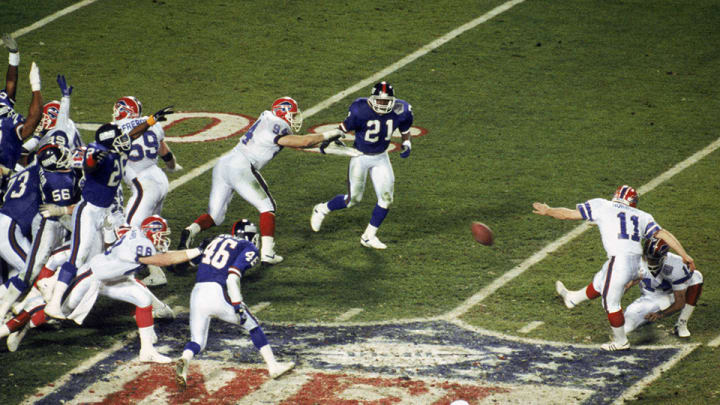
Many of sports’ most iconic moments are remembered for the wrong reasons: an errant play, a bad decision, skullduggery or out-and-out cheating.
Here are 10 of the more memorable moments in sports history that didn’t quite make Sports Illustrated’s 100 Greatest Moments, perhaps for the simple reason that a game or series was lost rather than won or that the victory was tainted.
1912 World Series: Game 8
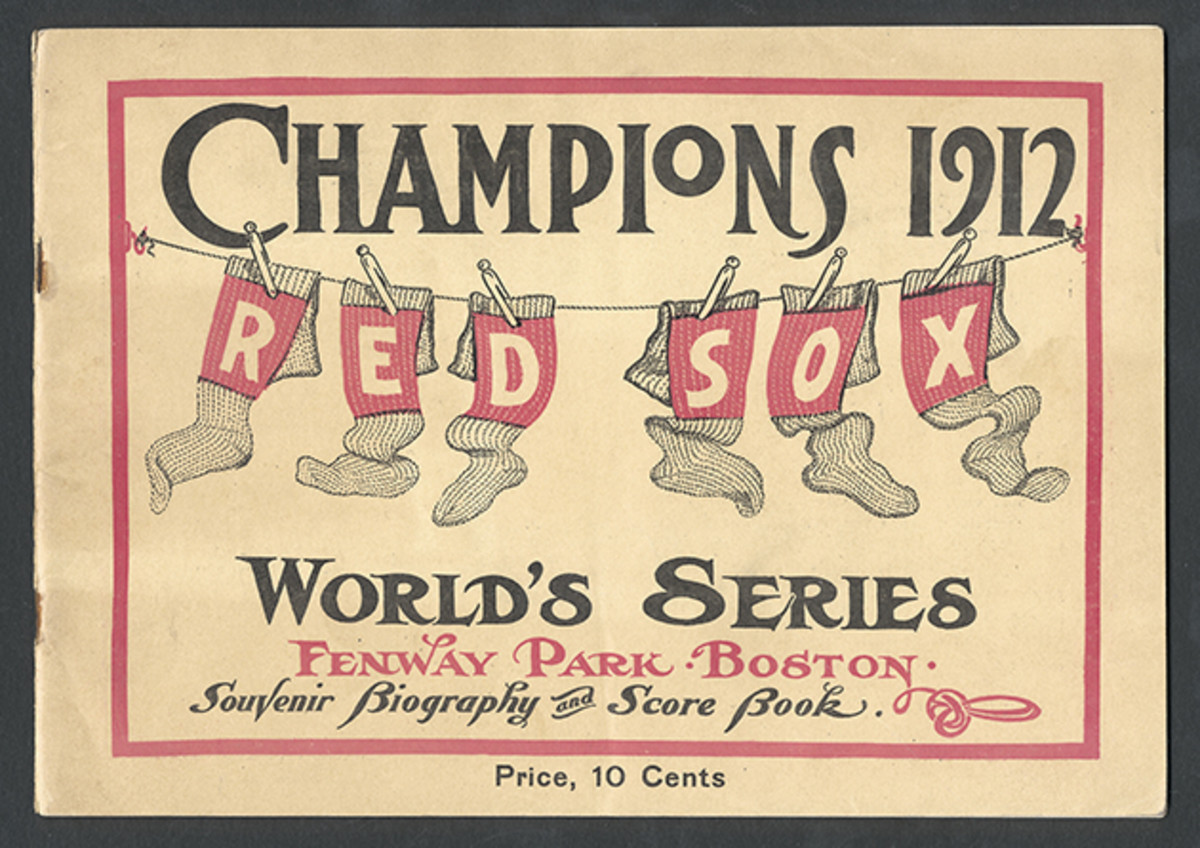
It can be said the 1912 Fall Classic between the Boston Red Sox and New York Giants did for baseball what the 1958 Colts-Giants overtime championship game and Super Bowl III would do for pro football: bring a higher level of excitement and drama to a sport’s premier event. Four games were decided by one run, another by two runs and Game Two ended in a tie—hence the need for a Game 8.
In Game 8, the Giants scored in the top of the 10th inning for a 2-1 lead, and Christy Mathewson was on the mound. But what should have been a sure thing began to unravel when center fielder Fred Snodgrass dropped a routine fly ball, allowing Clyde Engle to reach second base. Snodgrass redeemed himself with a spectacular catch off the bat of Harry Hooper as Engle advanced to third. After Steve Yerkes walked, the Giants let Tris Speaker’s foul pop drop for what should have been the second out. Speaker then singled home Engle with the tying run, and Yerkes eventually scored the Series winner on Larry Gardner’s long sacrifice fly.
The 1913 Spalding's Official Baseball Guide said of the 1912 World Series: "No individual, whether player, manager, owner, critic or spectator, who went through the World Series of 1912 ever will forget it. There never was another like it.”
But Snodgrass’ “$30,000 muff”—the financial difference between the winning and losing shares—is what history remembers.
1986 World Series: Game 6
Remembering the 1986 World Series
Roger Clemens and Dwight Gooden
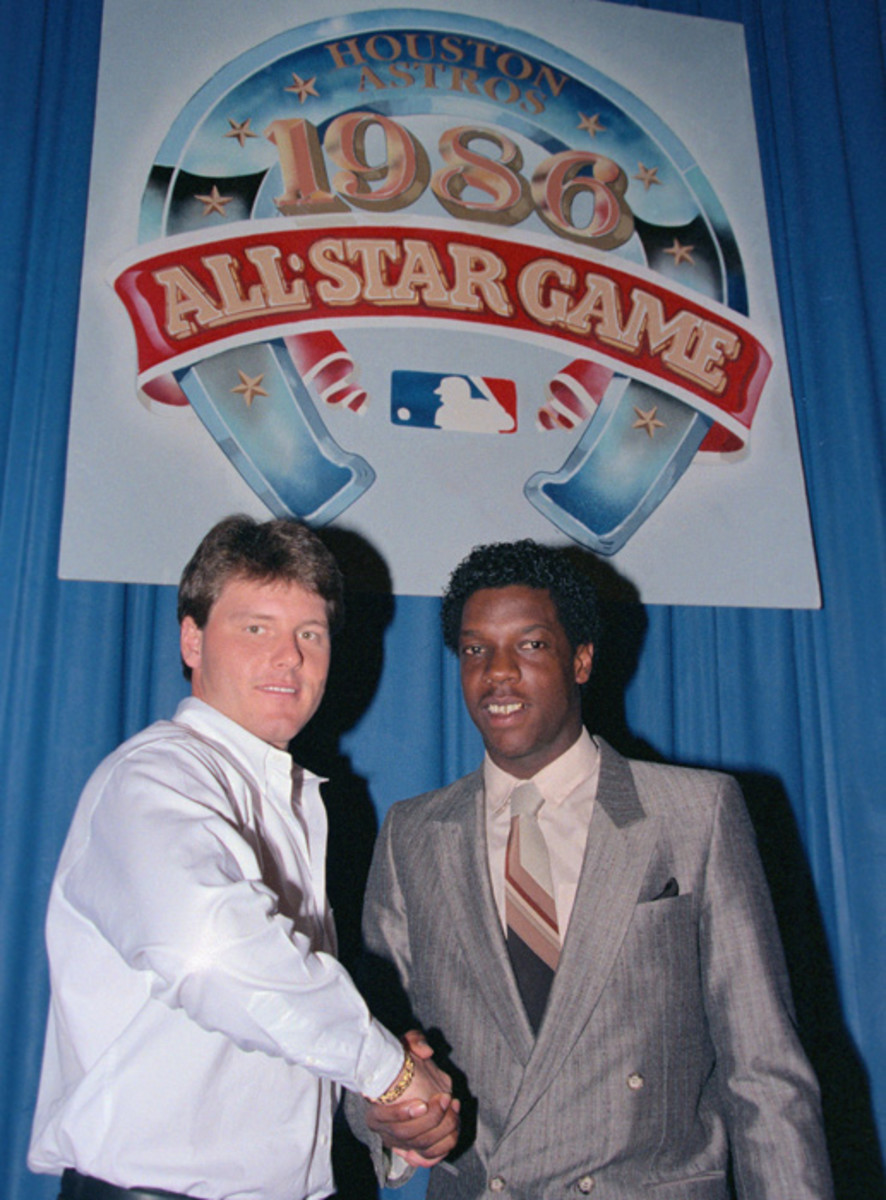
This October marks the 25-year anniversary of the Mets' World Series victory over the Red Sox. Though the games are a quarter-century old, they remain some of the most memorable in baseball history. Here is a look back at those memorable eight days.In this photo, taken during All-Star weekend in Houston, American League starter Roger Clemens shakes hands with National League starter Dwight Gooden. The two would later lead their teams to the World Series.
Boston Red Sox
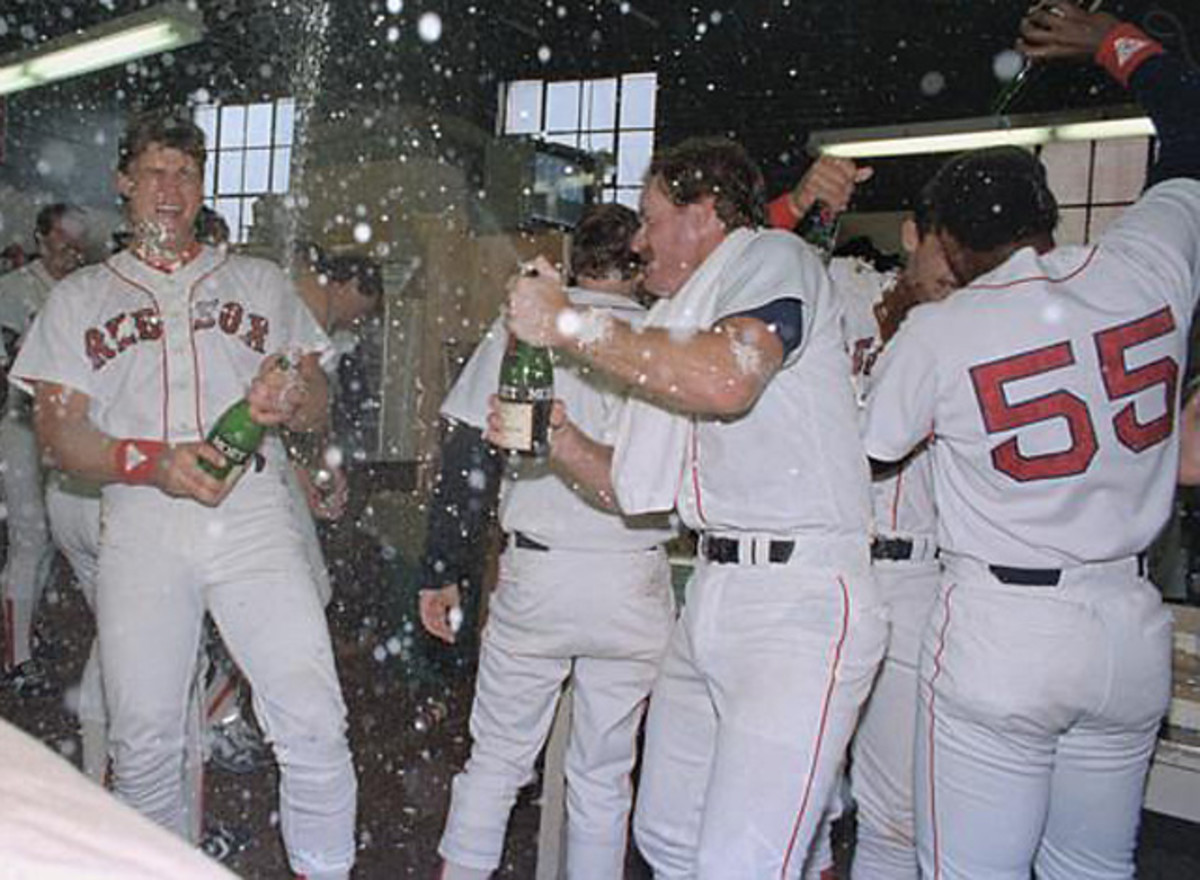
The Red Sox went 95-66 during the regular season and defeated the Angels in a memorable ALCS to advance to the World Series. Against California, Boston rallied from a 3-1 series deficit, including a dramatic comeback victory in Game 5 to avoid elimination.
New York Mets
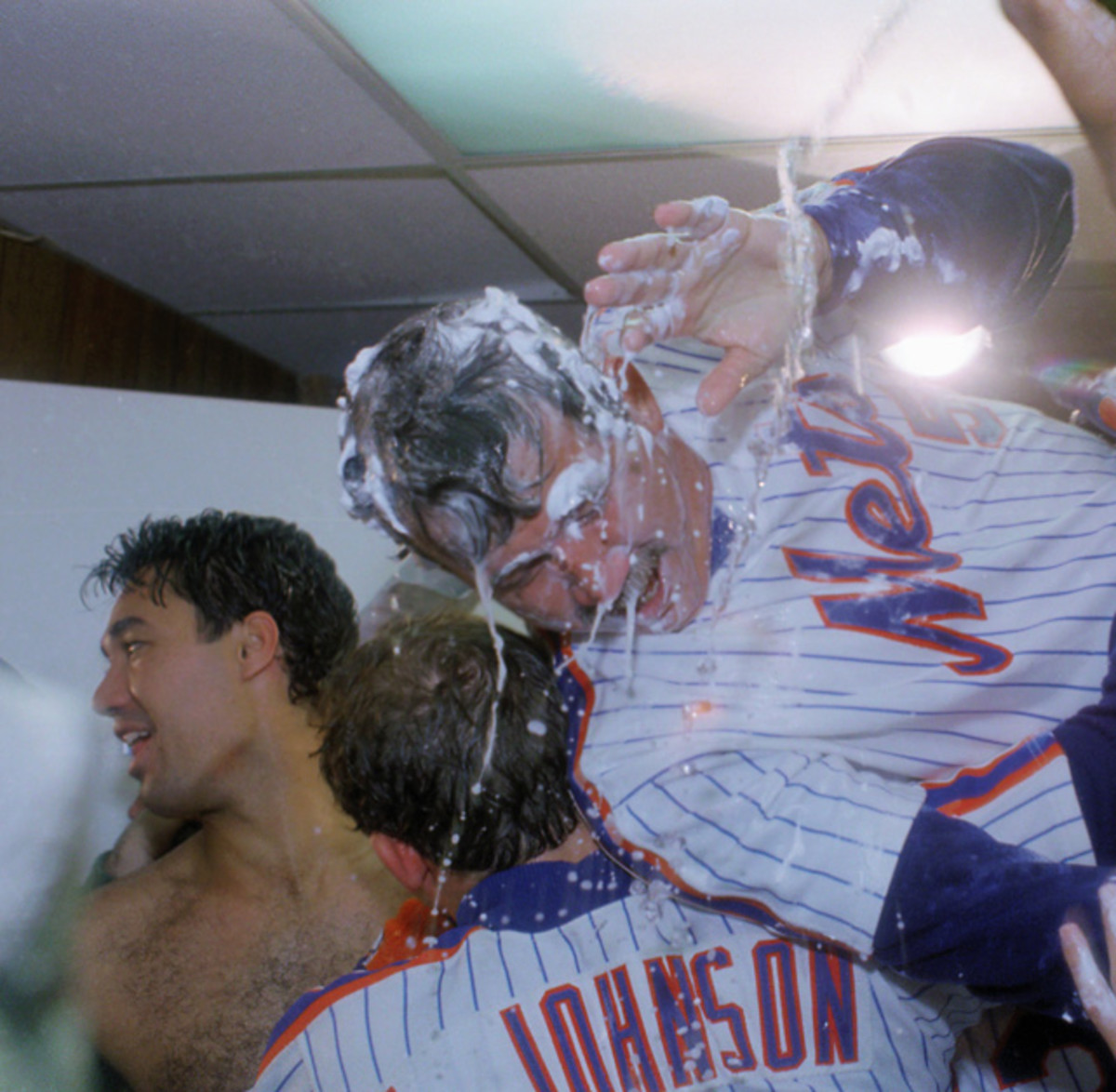
The Mets cruised to a league-best 108-54 mark, winning the NL East by 21.5 games. In the NLCS, New York defeated Houston in six games, highlighted by a 16-inning victory in the clincher.
Roger Clemens
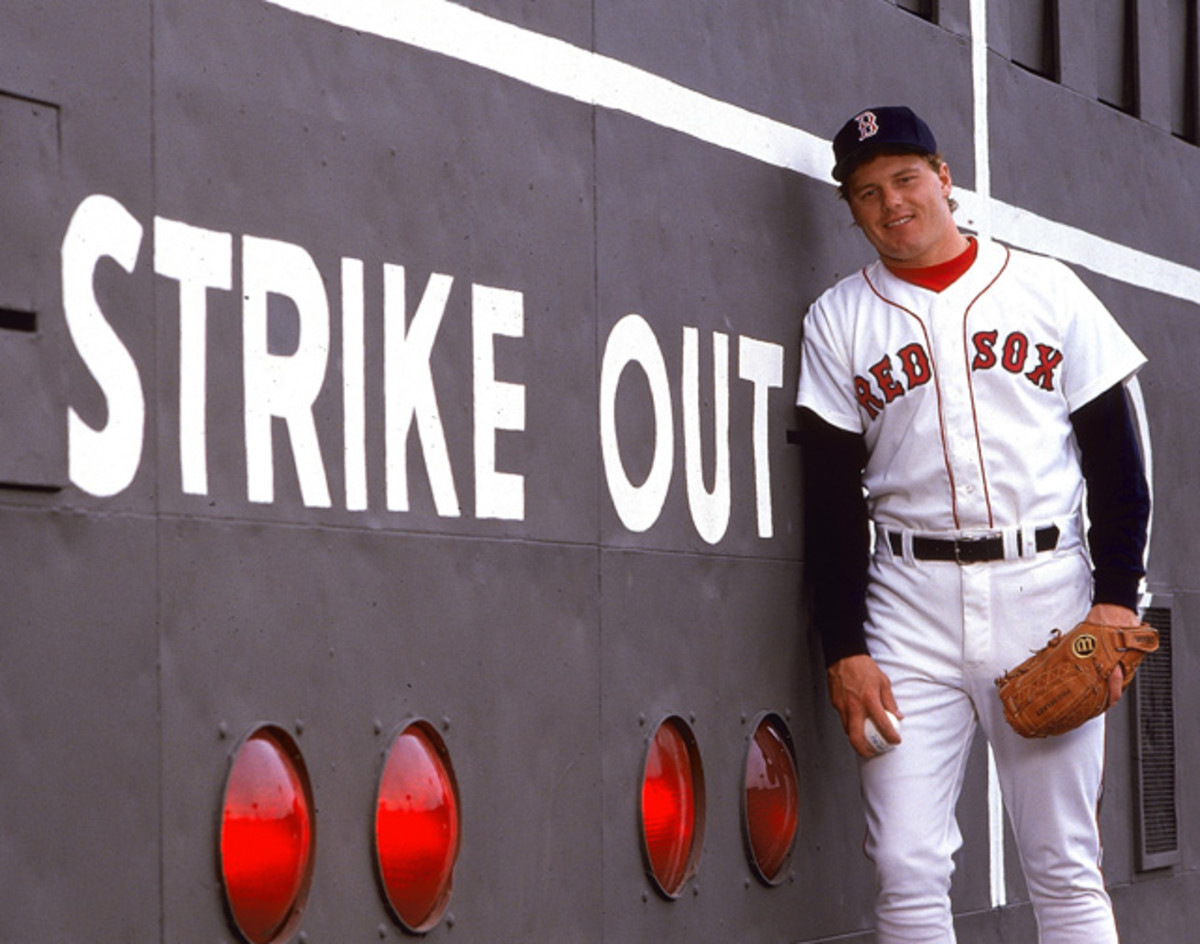
The Red Sox were led by 23-year-old Roger Clemens. The Texas native compiled a 24-4 record with a 2.48 ERA, which earned him both the Cy Young Award and American League MVP honors. He also became the first pitcher to strike out 20 batters in a game, in an early-season matchup against Seattle.
Dwight Gooden, Mike Tyson and Darryl Strawberry
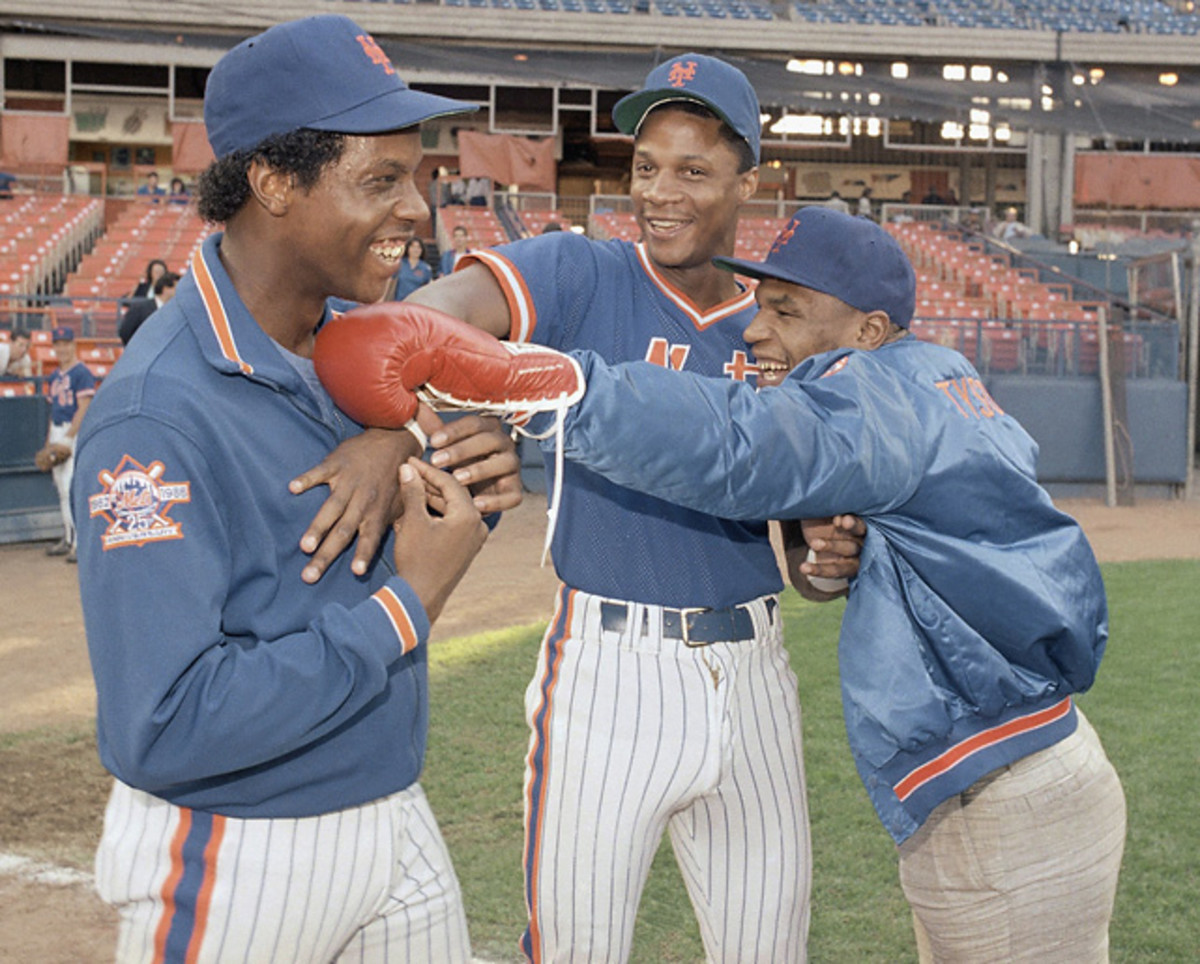
With a balance of dynamic youngsters and established veterans, the Mets were one of the most popular teams in baseball. Its two youngest stars, Darryl Strawberry and Dwight Gooden, were especially loved by New Yorkers. In this photo, Mike Tyson jokingly sticks a left jab to the face of Gooden.
Keith Hernandez and Wade Boggs
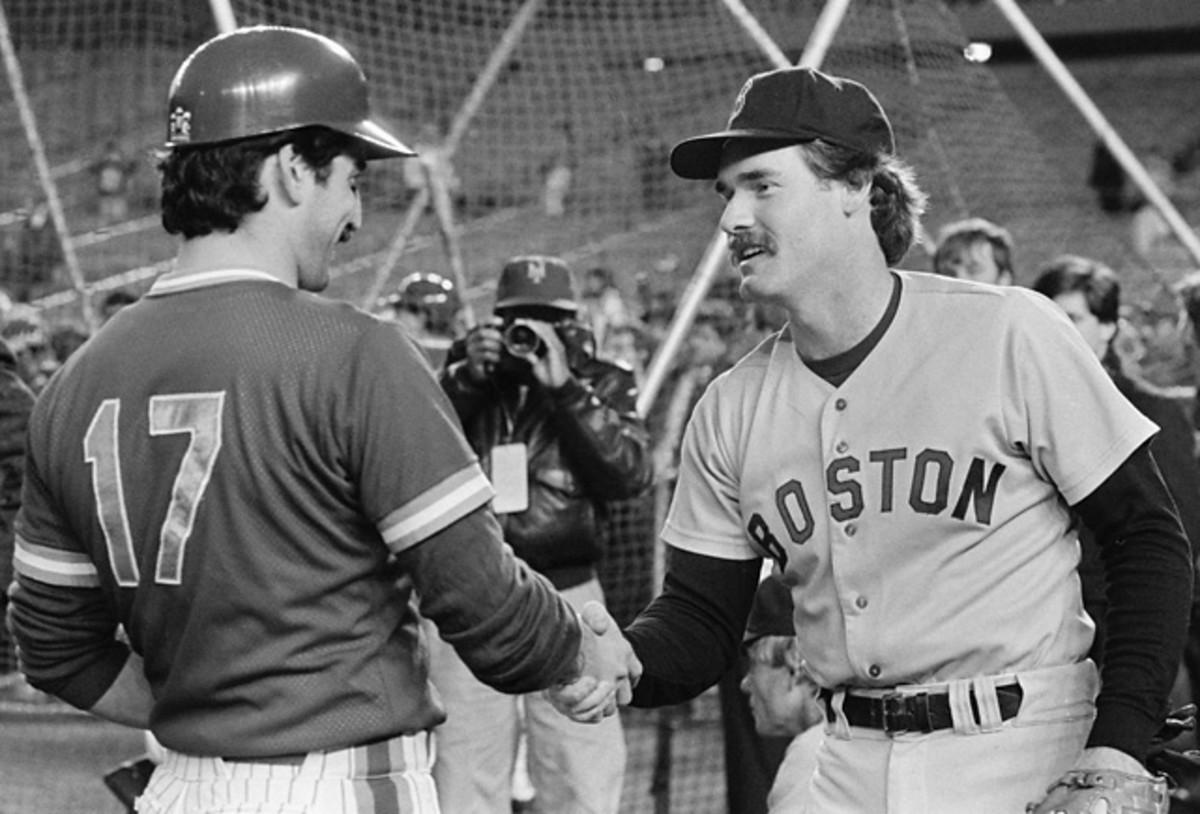
Two other notable players were Red Sox third baseman Wade Boggs and Mets first baseman Keith Hernandez. Boggs led all of baseball with a .357 average during the regular season while Hernandez batted .310 and won a Gold Glove. In this photo, the two shake hands before the start of the World Series.
Bruce Hurst
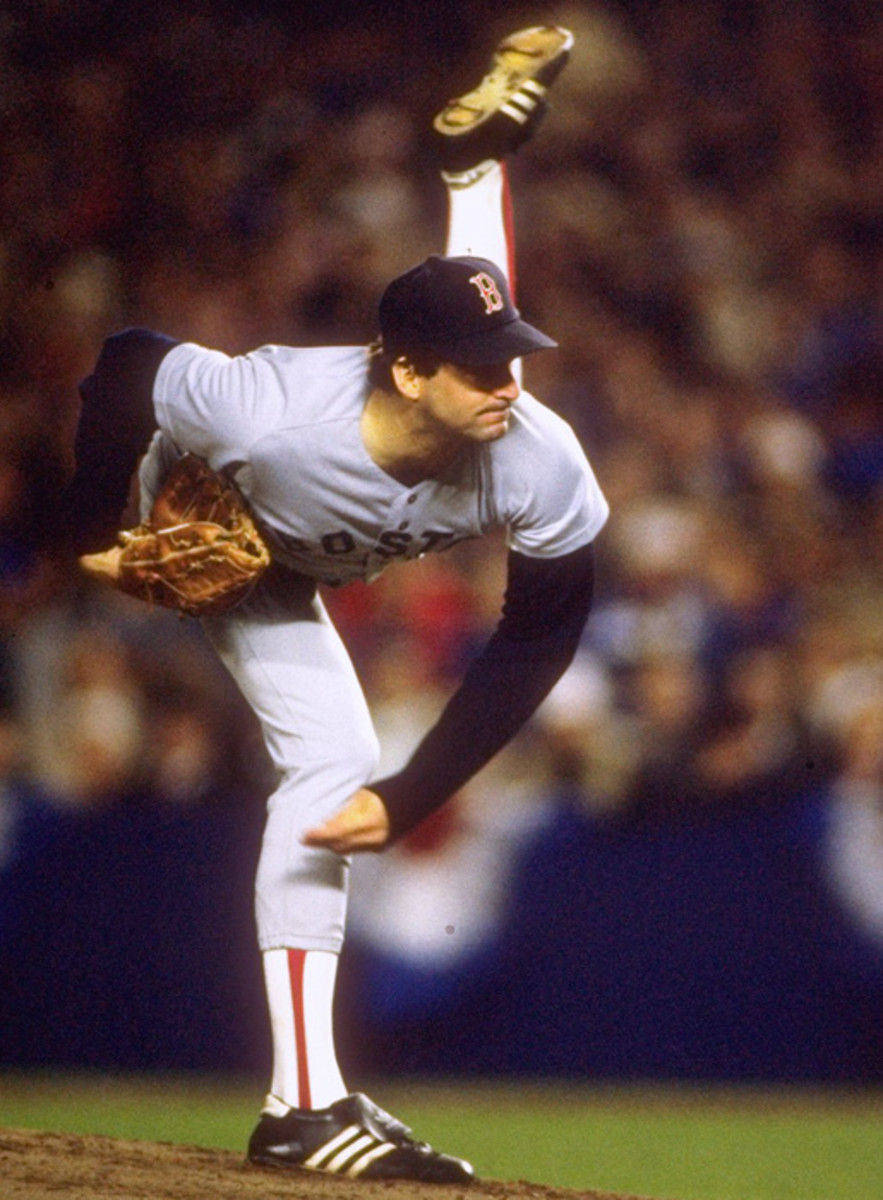
In Game 1, Red Sox starter Bruce Hurst was masterful, pitching eight innings and giving up four hits and no runs. Mets starter Ron Darling was also strong, but gave up one unearned run that turned out to the difference in Boston's 1-0 victory.
Billy Joel
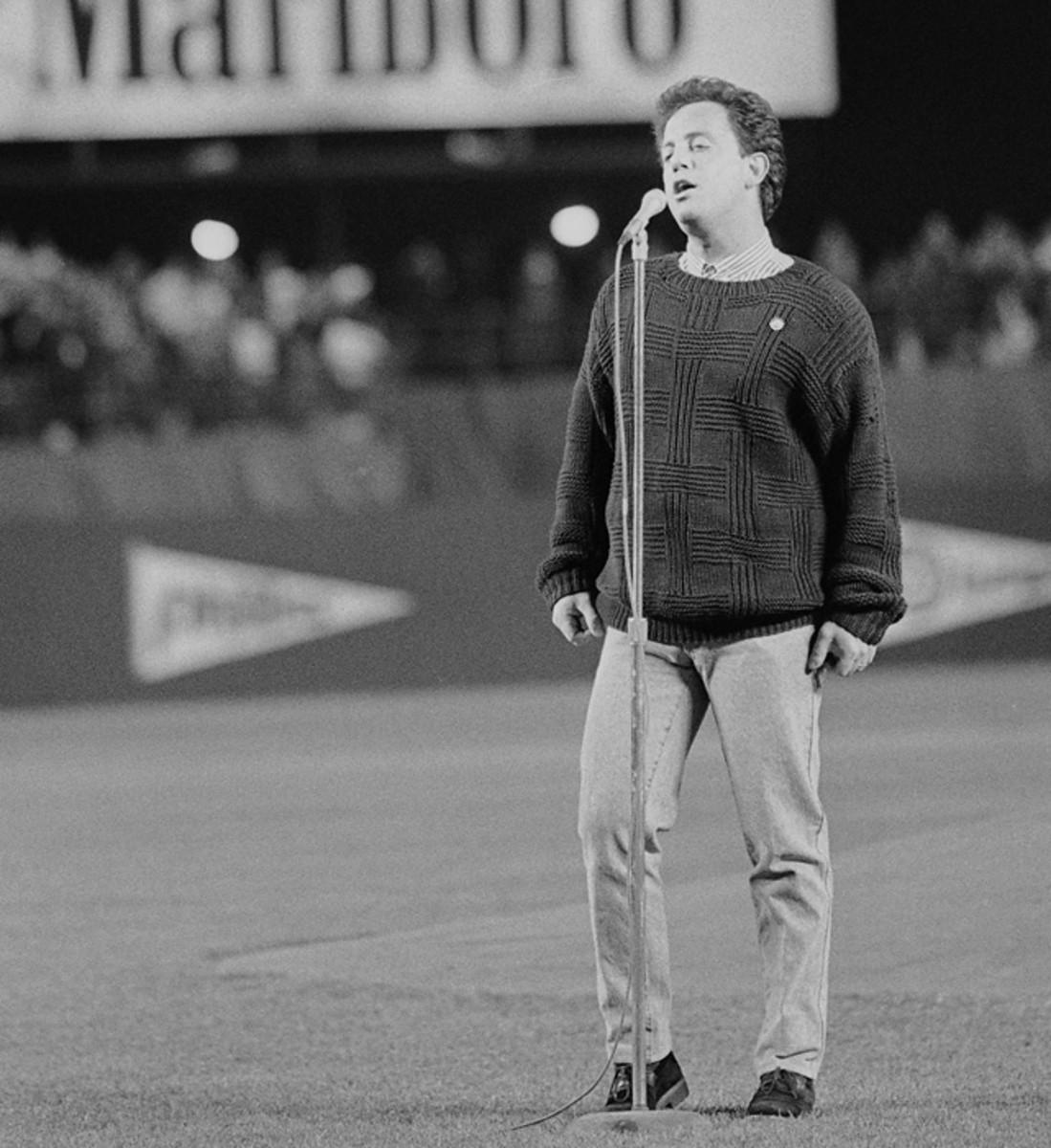
New York native Billy Joel sings the national anthem before Game 2.
Lenny Dykstra
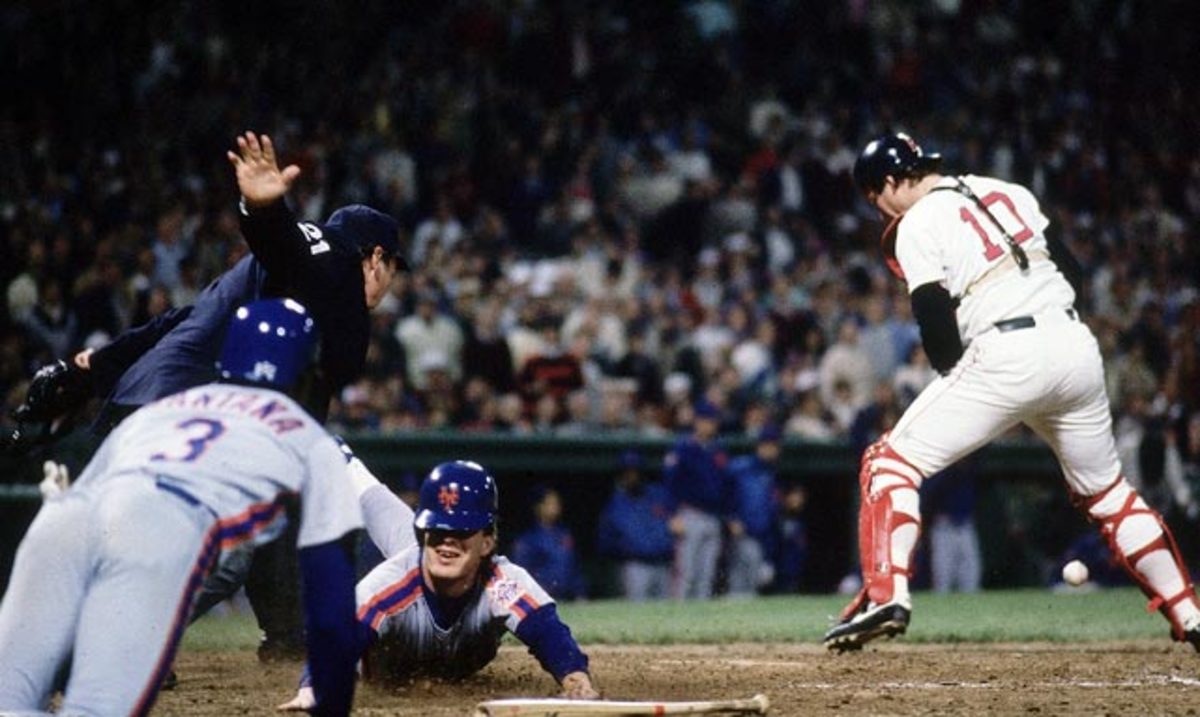
After losing to the Red Sox again in Game 2, the Mets responded in Game 3 at Fenway Park with a 7-1 victory. Lenny Dykstra (pictured here during the season) led off the game with a home run against Oil Can Boyd and collected four hits in the rout.
Gary Carter
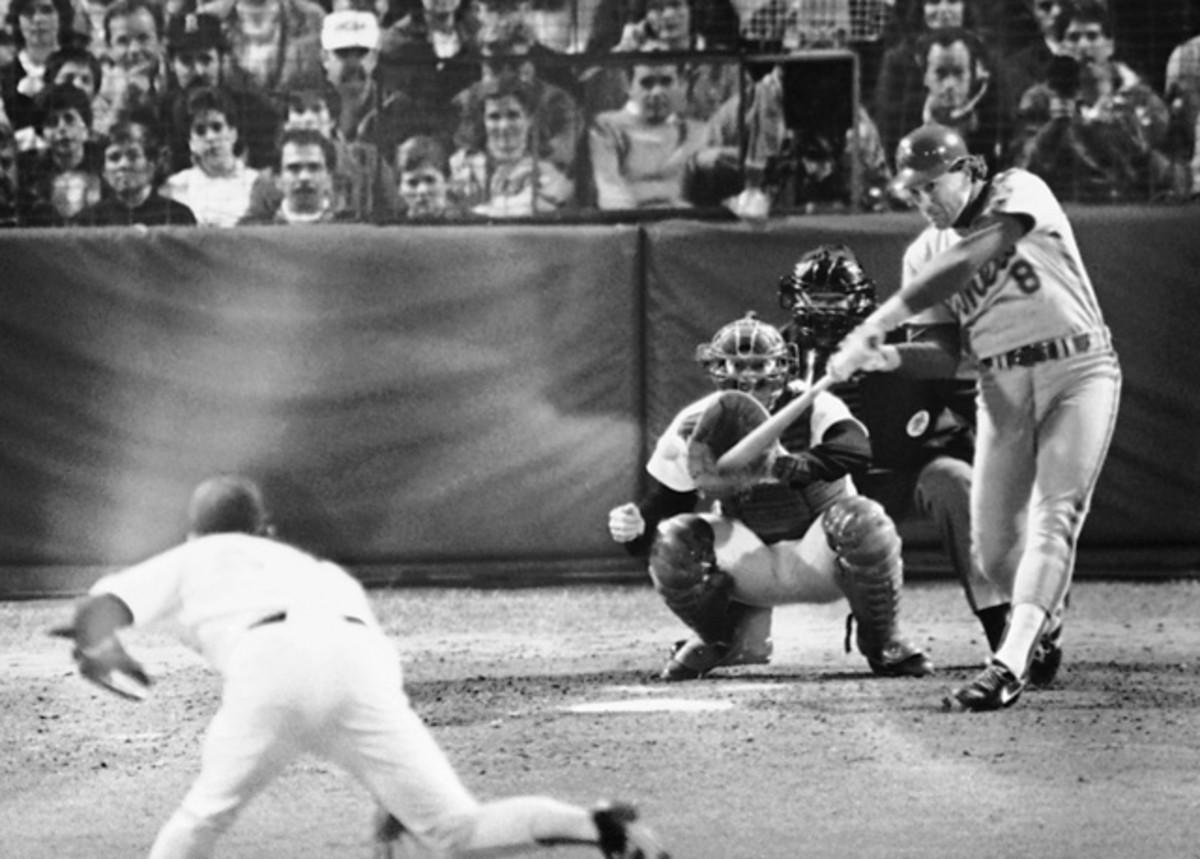
In Game 4, Gary Carter homered twice as the Mets rolled 6-2 to even the series at two games apiece.
Jim Rice
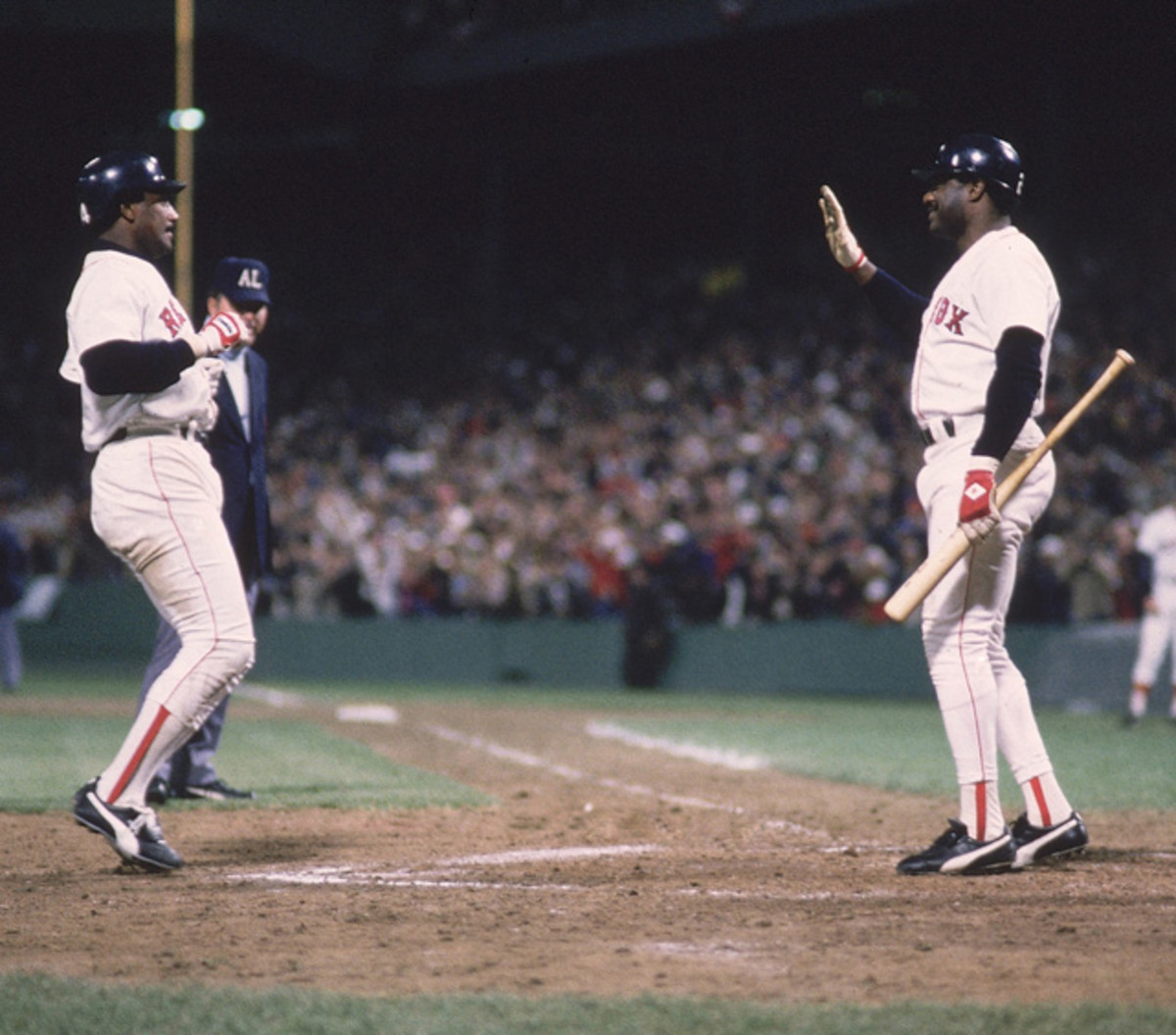
Boston's Bruce Hurst was again outstanding in Game 5 at Fenway, going the distance in a 4-2 victory. Mets ace Dwight Gooden struggled early and was pulled after four innings and three earned runs. Jim Rice (pictured) had two hits and scored a run for Boston.
Mets Fans
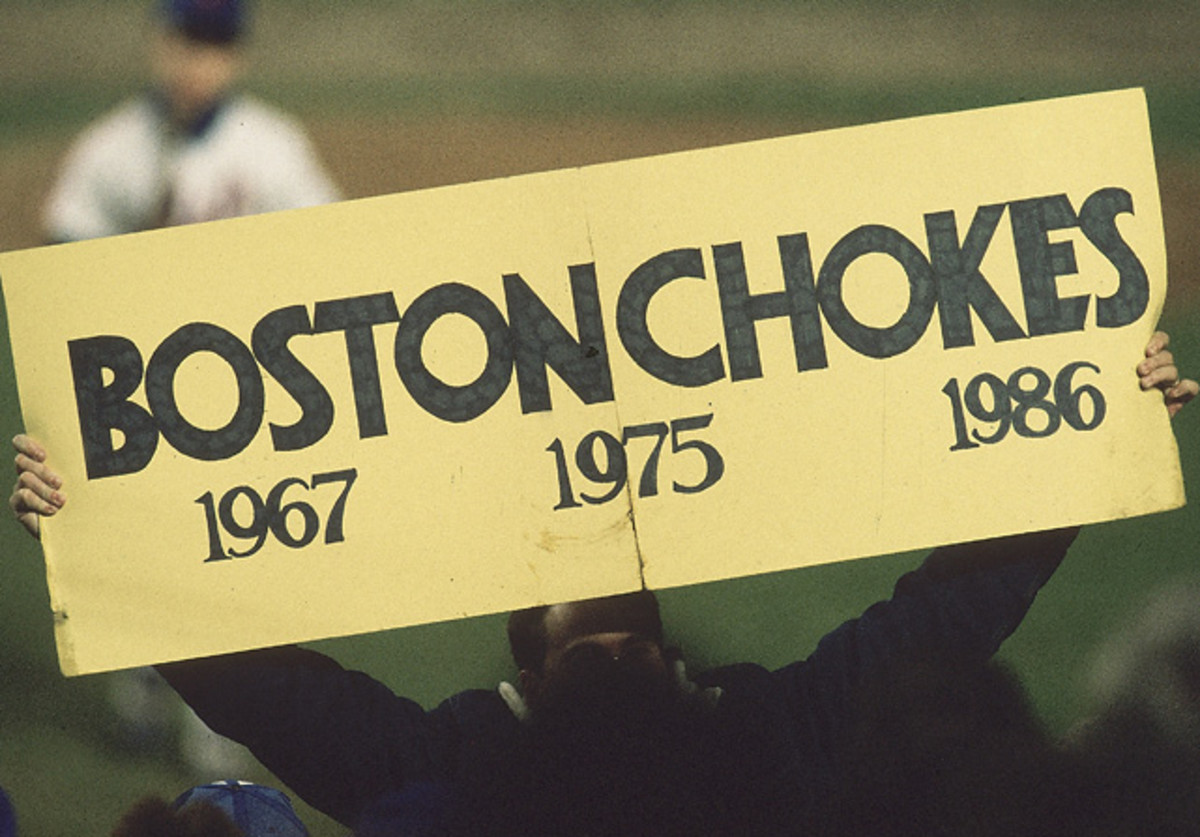
Going into Game 6, Boston fans hoped to wipe away nearly 70 years of heartbreak with a World Series victory. The fans at Shea Stadium were quick to remind the Red Sox faithful about their tortured history.
New York Mets

In Game 6, Boston had leads of 2-0 (in the fifth) and 3-2 (in the eighth) but the Mets, donning rally caps in the dugout, came back to tie it both times. The score was 3-3 in the 10th inning when Dave Henderson hit a solo home run and the Red Sox tacked on one more run for a 5-3 lead.
Bill Buckner
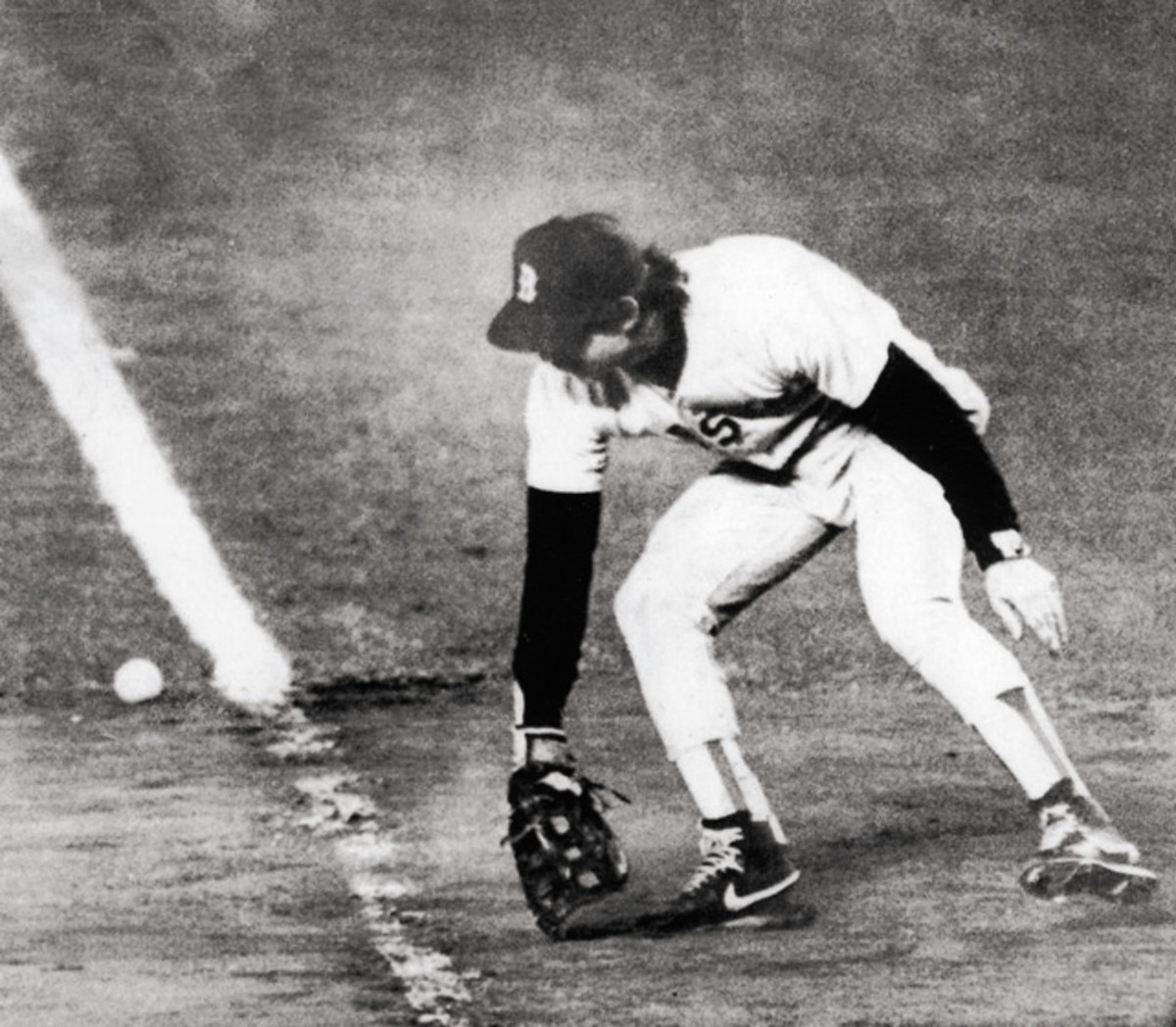
In the bottom of the 10th, Red Sox reliever Calvin Schiraldi retired the first two Mets batters before a combination of three singles and a wild pitch (the latter thrown by Schiraldi's replacement, Bob Stanley) led to two Mets runs. Then, with the game tied at 5-5 and Ray Knight at second, Mookie Wilson's routine ground ball to first went through Bill Buckner's legs, allowing Knight to score the winning run.
Gary Carter and Jesse Orosco
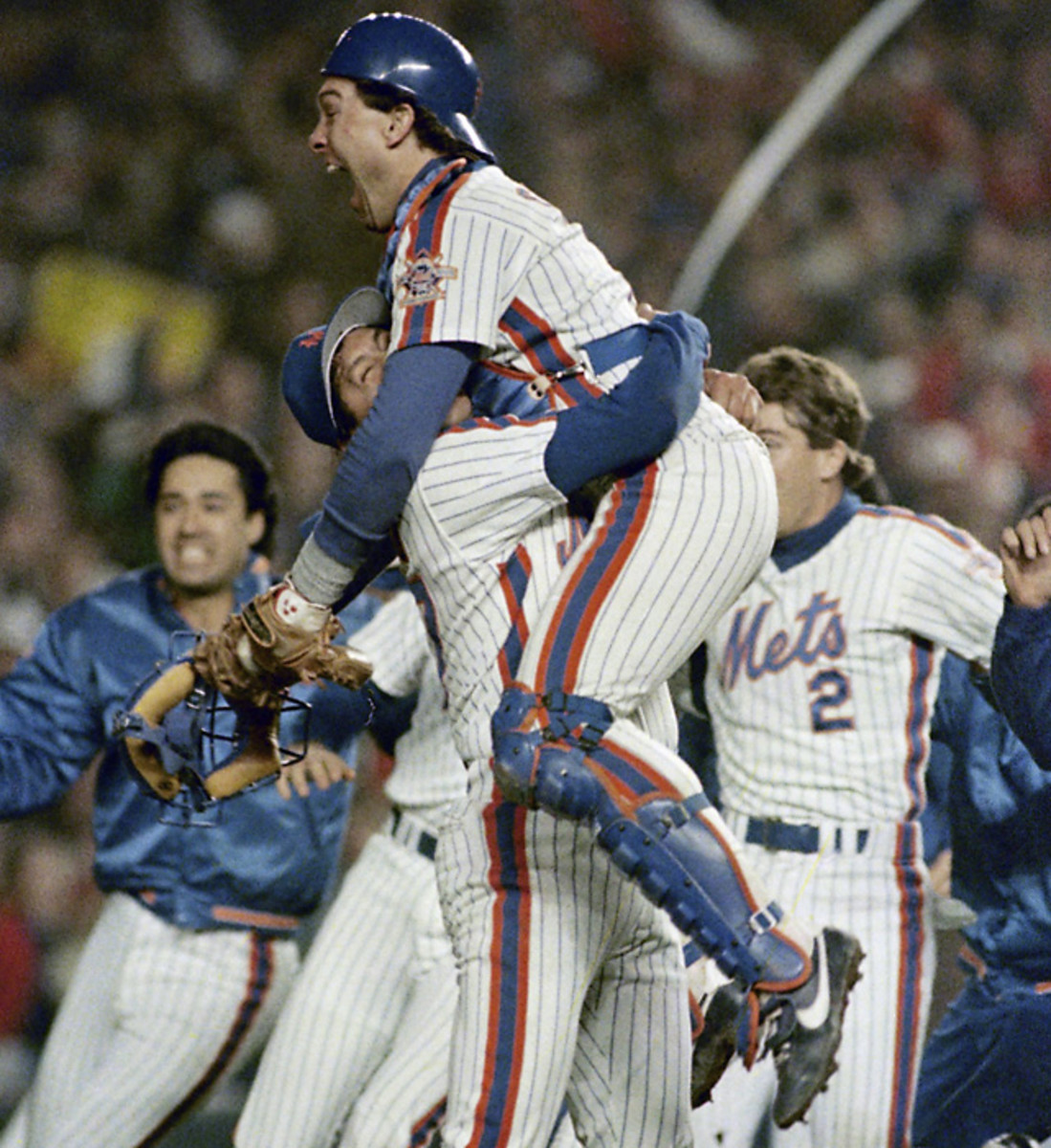
In Game 7, the Mets trailed 3-0 before scoring all of their runs in the sixth, seventh and eighth innings of an 8-5 victory. It was the franchise's first championship since 1969.
Lenny Dykstra, Rick Aguilera, Bob Ojeda and Dwight Gooden
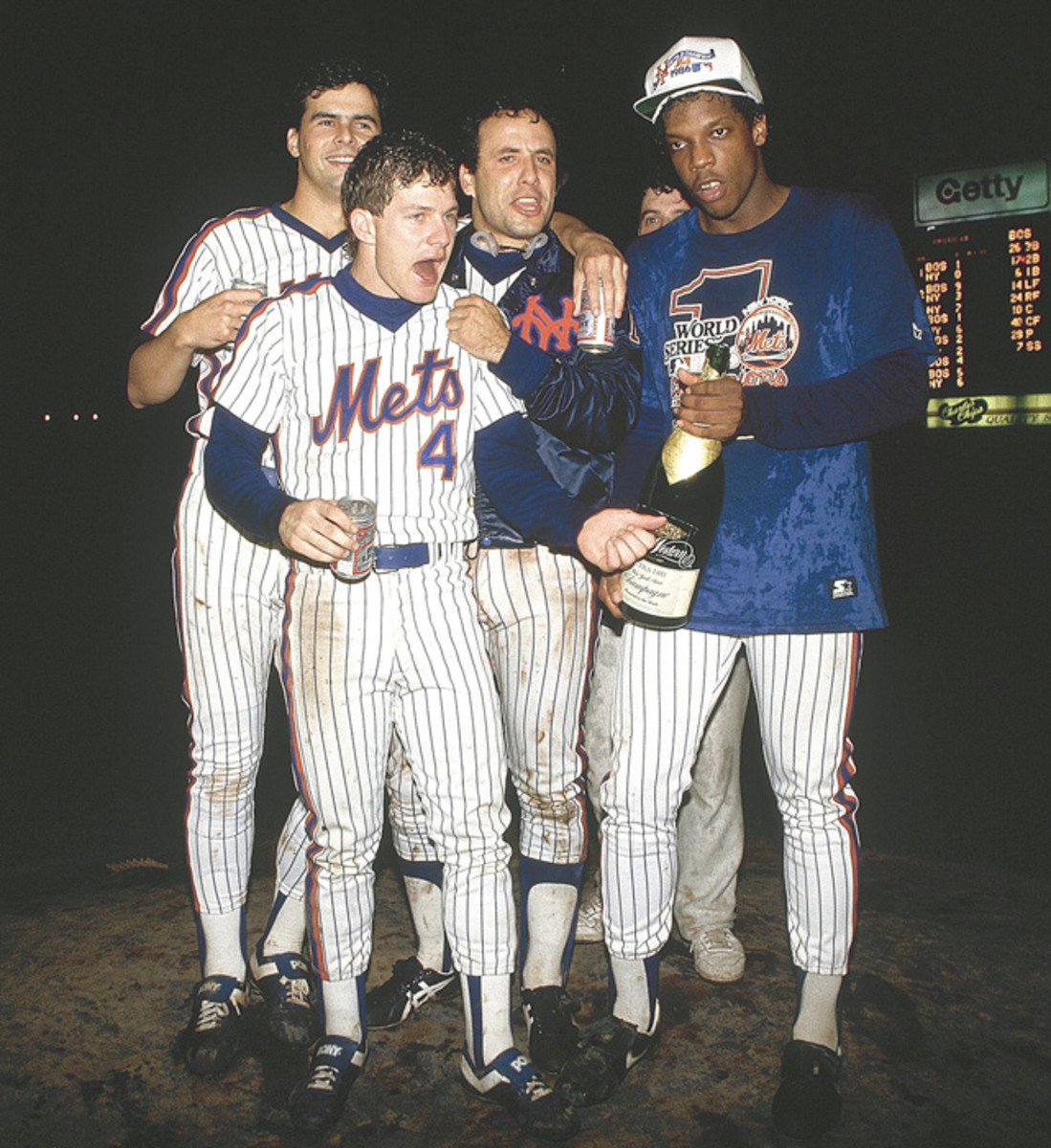
Lenny Dykstra celebrates with Rick Aguilera, Bob Ojeda and Dwight Gooden after winning Game 7.
Wade Boggs
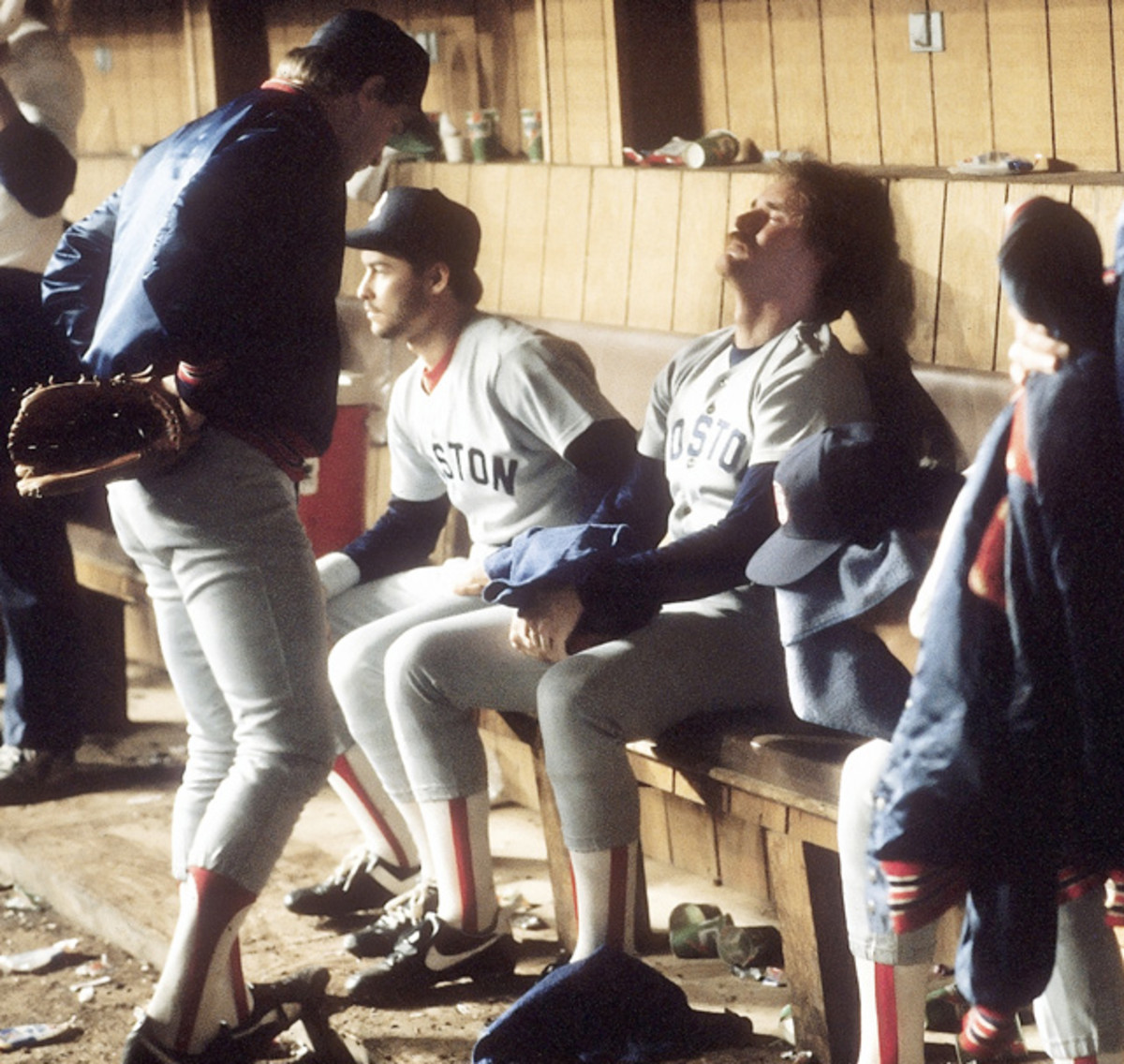
As the Mets celebrated, the impact of the loss is felt by Wade Boggs and the rest of the Red Sox.
Ray Knight
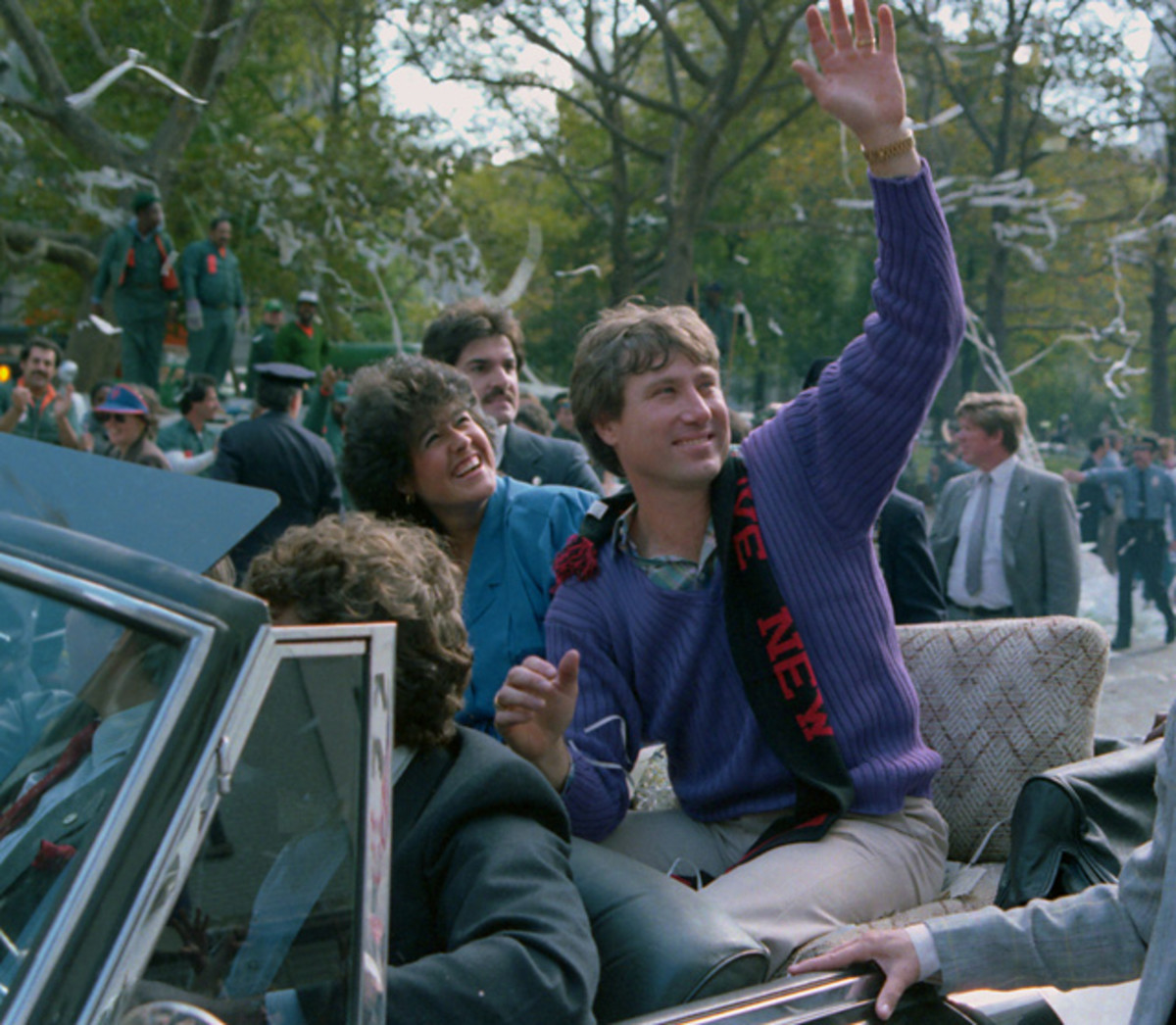
Third baseman Ray Knight, who was named World Series MVP, waves to crowds of New Yorkers during the championship parade.
Bill Buckner

Bill Buckner reads some mail as he clears out his locker at Fenway Park one day after the Red Sox lost the World Series.
74 years later, the Red Sox were involved in another dramatic World Series with a National League team from New York, this time the Mets. The New Yorkers prevailed in seven games but, as in 1912, it was a miscue that now keeps the Series alive in the memory of baseball fans.
• From the SI Vault: Why we'll never forget Game 6
Boston was ahead 3-2 in games and led 5-3 heading into the bottom of the 10th inning of Game 6. After the first two Mets were retired the Red Sox’s first World Series title since 1918 was all but won. But it wasn’t. Three straight hits brought the Mets within 5-4. Bob Stanley’s wild pitch scored the tying run and advanced Ray Knight to second. Mookie Wilson, who had battled Stanley through nine previous pitches, then grounded the 10th pitch near the first base line. When the ball squirted under first baseman Bill Buckner’s glove, Knight came around from second to score and the Mets, improbably, had won 6-5, setting up their championship clincher in Game Seven.
A terrific series, yes. However, Buckner’s error is what fans remember.
1988 Olympic Games: Ben Johnson’s shame
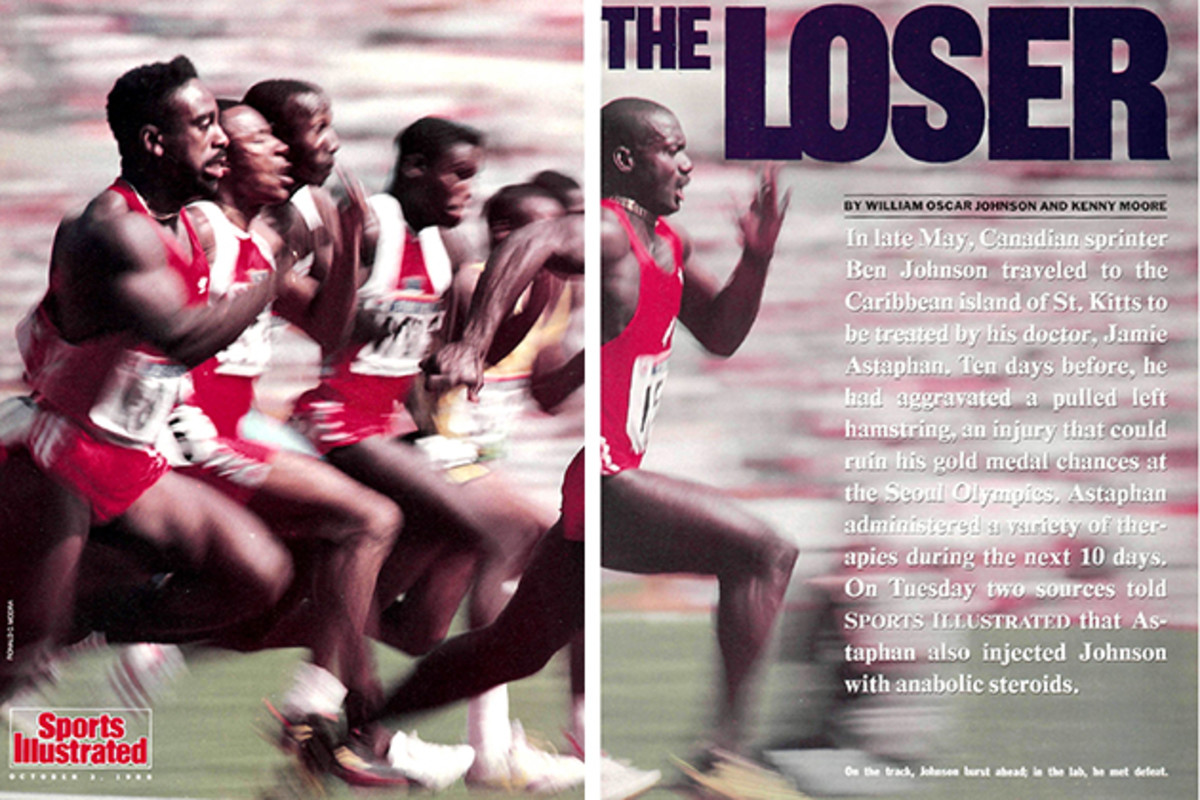
The 1988 Seoul Olympics featured spectacular performances by the sister-in-law tandem of Florence Griffith Joyner in the sprints and Jackie Joyner Kersee in the long jump and heptathlon where she set a world record of 7,291 points that hasn’t been threatened in nearly three decades.
But Seoul is best remembered for the drug disqualification of Canadian sprinter Ben Johnson. Three days after running a world record 9.79 in the 100 meters, Johnson tested positive for the banned steroid stanozolol. The gold medal was awarded to Carl Lewis of the U.S., Johnson’s bitter rival. Johnson never again won a major international race and was banned a second time for steroid use in 1993, this time for life.
1972 Munich Olympics basketball final
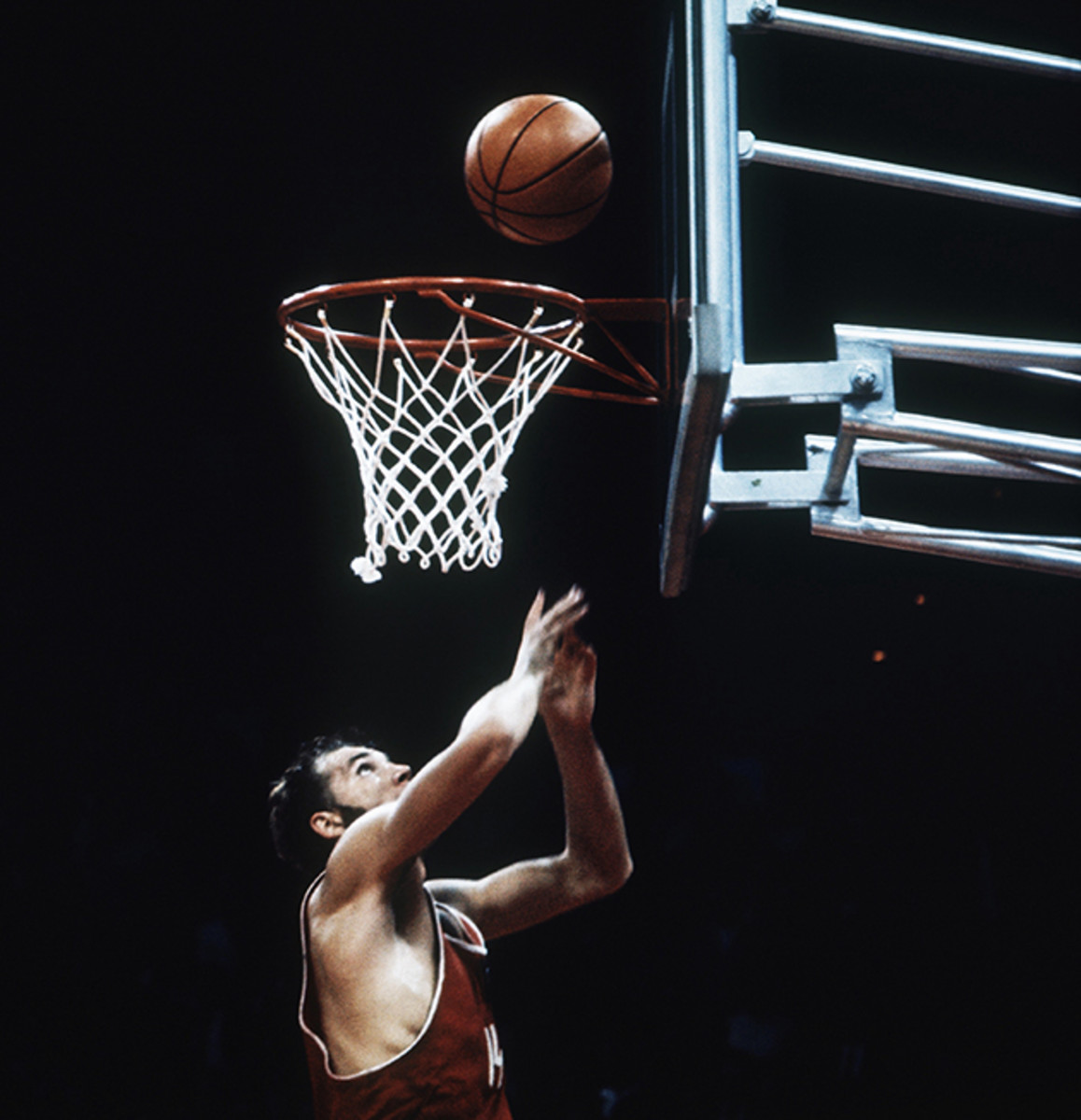
The most memorable game in Olympic basketball history still ignites debate more than 40 years later. Did the Soviet Union score an improbable 51-50 victory over the United States on a court-length pass and layup by Alexander Belov? Or was the game stolen by incompetent officials who gave the Soviets three different chances to inbound the ball with three seconds to play?
• From the SI Vault: A Few Pieces of Silver
Despite vocal and vehement protests from the U.S., the Soviet victory stood, and the Americans had suffered their first defeat in Olympic basketball. The U.S. team never accepted their silver medals.
1919 World Series: Black Sox scandal
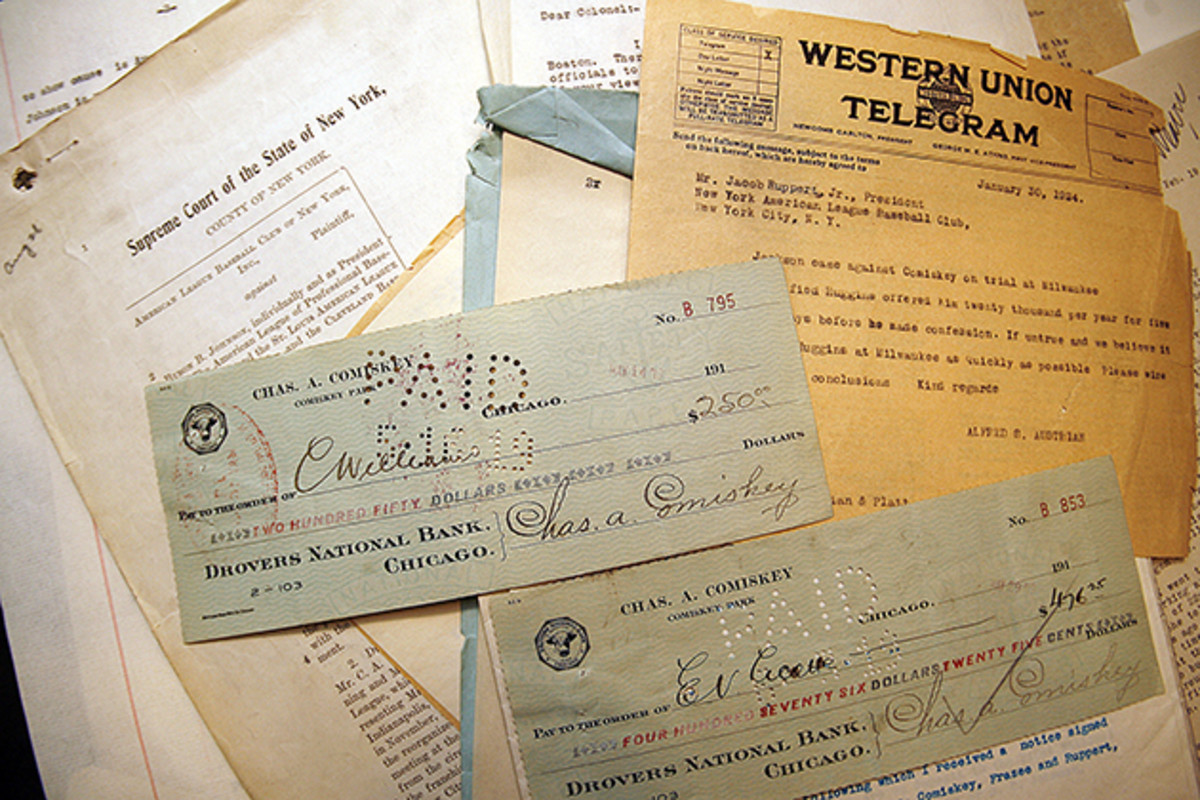
Sometimes cheating and chicanery are done not to gain an advantage but to lose. A lot of things seemed fishy when the heavily favored Chicago White Sox lost the 1919 World Series to the Cincinnati Reds five games to three in a best-of-nine Fall Classic. A year later the truth came out: eight Sox players were implicated for conniving with gamblers to throw the Series.
The promised payments to the players never materialized, and new Commissioner Kenesaw Mountain Landis ruled that all eight, including star outfielder Shoeless Joe Jackson, were banned from baseball for life. History has named that 1919 team the Black Sox.
1950-51 City College of New York: From heroes to dupes
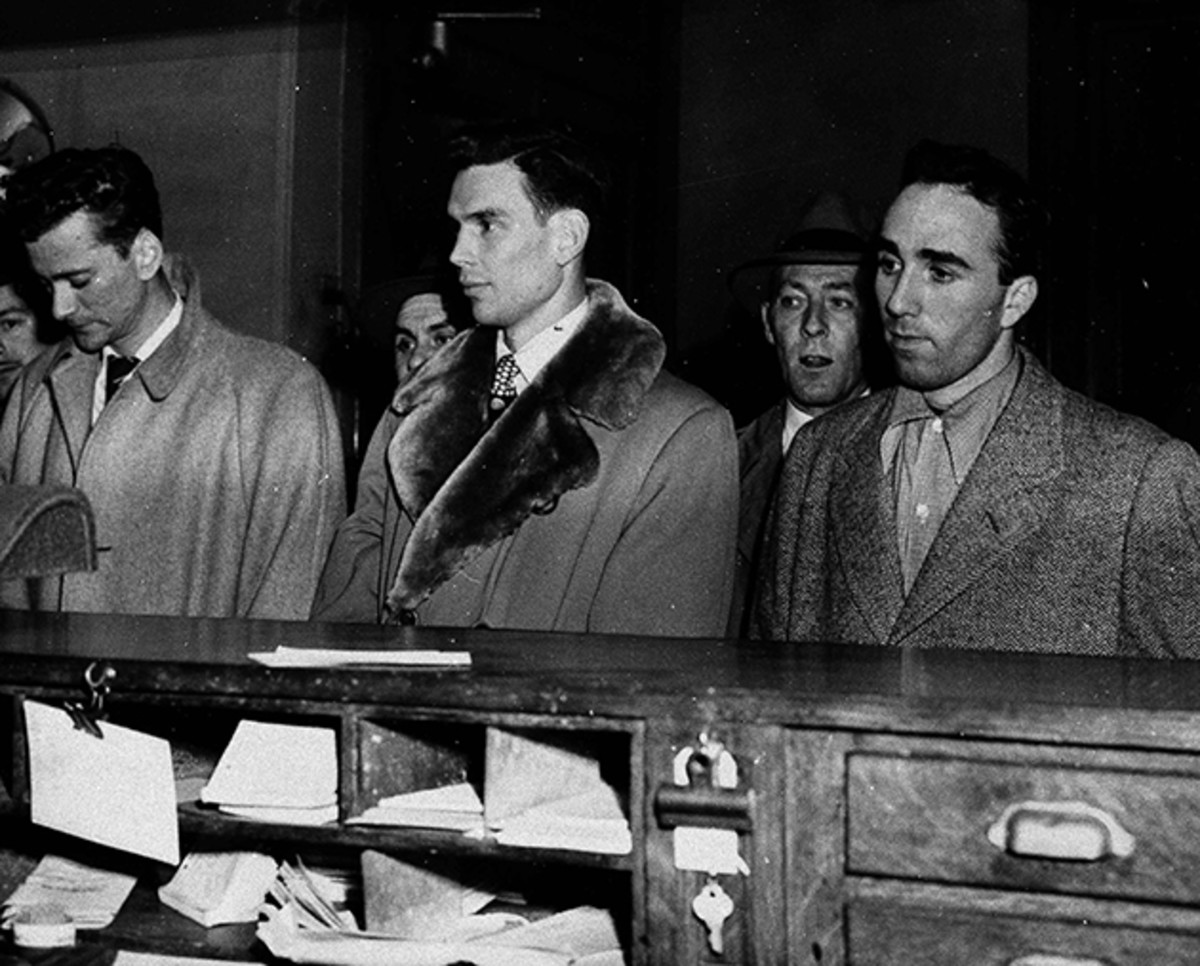
The City College Beavers of 1950 are the only school to win college basketball’s NCAA and NIT championships in the same year. Players such as All-American forward Irwin Dambrot were nearly as popular with New York sports fans as the Yankees.
However, less than a year after the double triumph, it was learned that many of the CCNY players had accepted money from gamblers, not to lose but to shave points to keep games within a specific point spread. The players were banished, CCNY was banned from playing at Madison Square Garden and Beavers basketball was deemphasized. Today CCNY is a Division III program.
Lance Armstrong
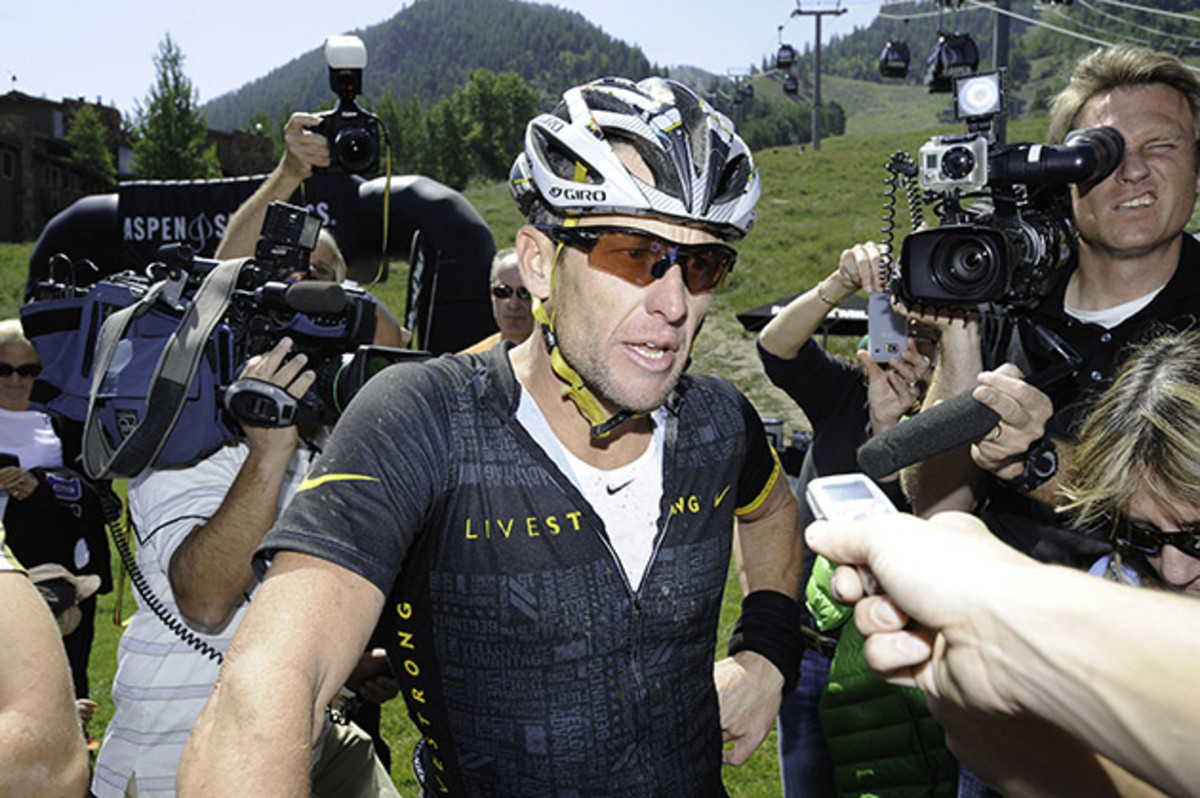
Few individual U.S. athletes have been as honored as cyclist Lance Armstrong, winner of seven consecutive Tour de France titles between 1999 and 2005. Sure, there were accusations of drug use but Armstrong dismissed such talk as whining from sore losers. He often threatened his accusers with expensive court actions.
After a lengthy investigation, however, the United States Anti-Doping Agency ruled that Armstrong was a serial drug user and called him the leader of “the most sophisticated, professionalized and successful drug program that sport has ever seen.”
• From the SI Vault: A Massive Fraud Now More Fully Exposed
The disgraced Armstrong had his Tour de France records erased and received a lifetime ban from the sport he had helped raised to the main stage of U.S. athletics.
Mark McGwire and Barry Bonds
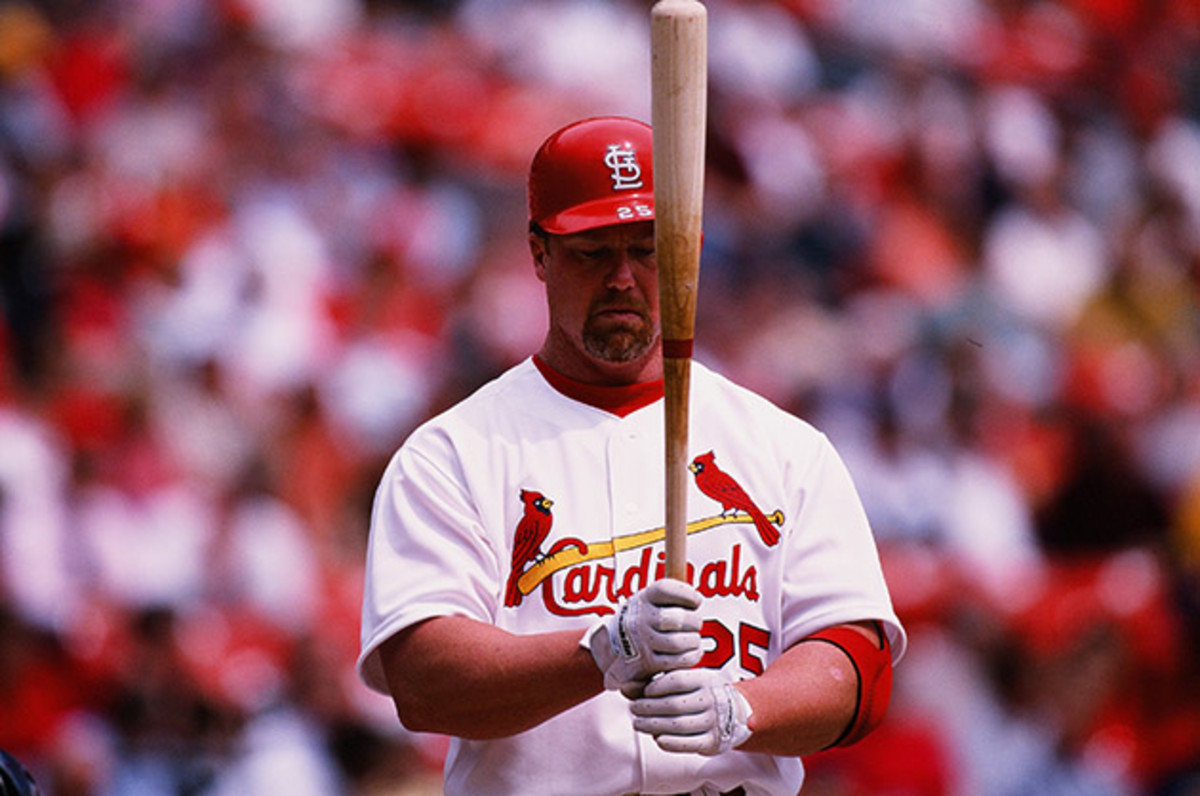
It was all great fun in 1998 when Mark McGwire and Sammy Sosa attacked Roger Maris’ single-season home run record of 61. Both players flew past Maris’ mark with McGwire belting an improbable No. 70 on the season’s final day. Three years later Barry Bonds, a superior all-around ballplayer to McGwire and Sosa, rewrote the record again by smacking 73 home runs.
• From the SI Vault: Totally Juiced
Alas, it was too good to be true. McGwire admitted to using anabolic steroids (not forbidden at the time) to beef up and stay healthy. Skeptics suspected Bonds also used steroids, noting that his weight soared from a lithe 185 in 1991 to nearly 230 pounds in 2001. Bonds, however, attributed his late-career surge in size and power to an improved workout regime. He said any steroid use was by accident or without knowing what his trainers were giving him.
Super Bowl XXV: Scott Norwood wide right
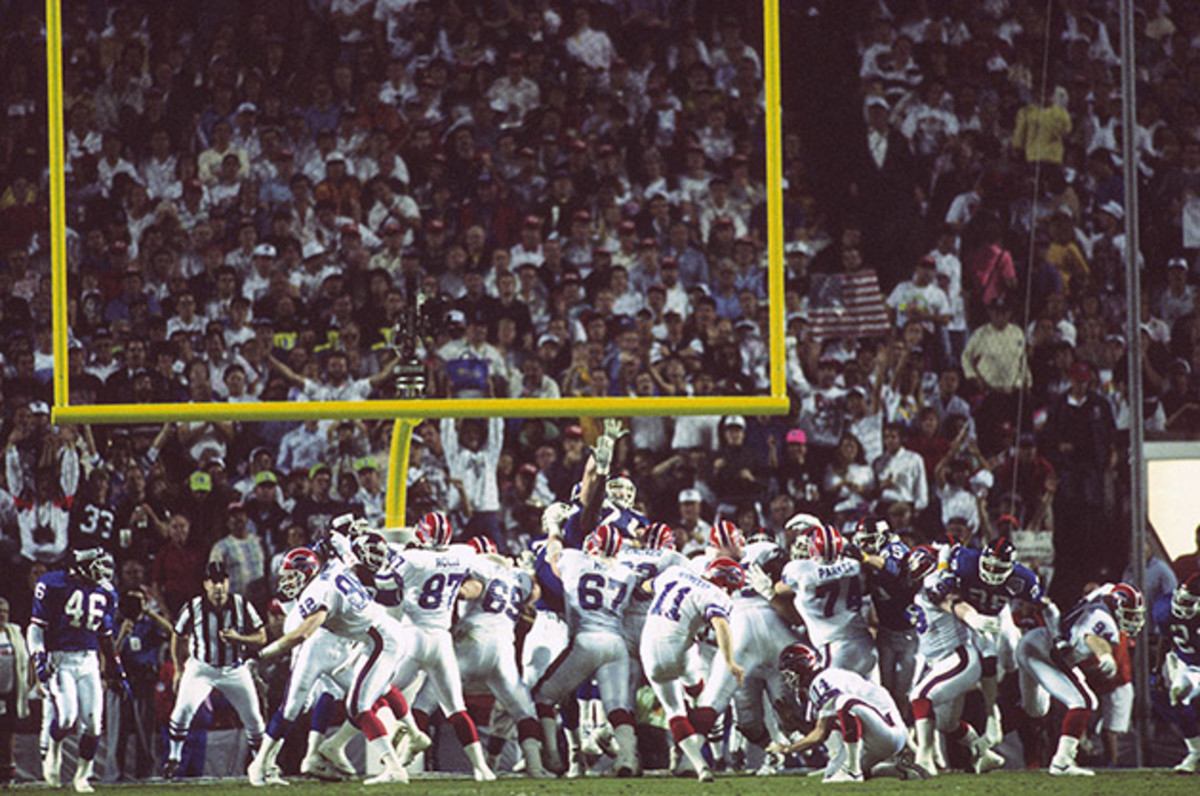
The silver anniversary Super Bowl between the New York Giants and the Buffalo Bills was one of the best championship games in any sport, yet is best remembered for a final unsuccessful play. The game featured four lead changes as the Giants played keep-away, holding the ball for more than 40 minutes. They led 20-19 entering the final minutes.
• From the SI Vault: A Life After Wide Right
A desperate Buffalo drive moved the ball to the Giants 30 where kicker Scott Norwood lined up a 47-yard field goal with eight seconds left. The kick sailed wide right by inches, giving the Bills their first, and most painful, of four consecutive Super Bowl defeats.
2003 NLCS Game Six: The Bartman game
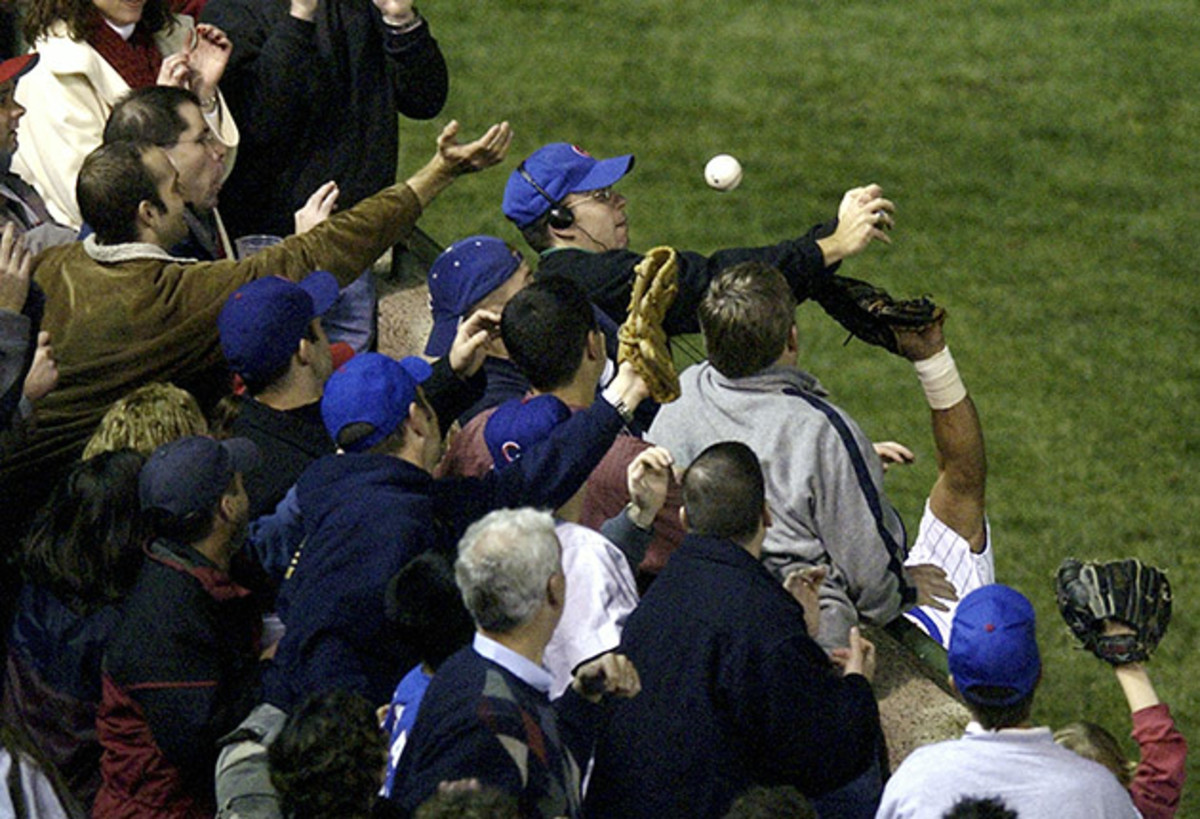
How typical of the Chicago Cubs, a team that hasn’t appeared in a World Series since 1945 and hasn’t won a championship since 1908, that one of the franchise’s signature plays didn’t involve a player but a fan.
In Game 6 of the 2003 NLCS, with the Cubs leading the Florida Marlins 3-0 and only five outs from the National League pennant, Luis Castillo lifted a foul fly down the left field line. Left fielder Moises Alou was in position to catch what would have been the second out but fan Steve Bartman, his head practically hidden by headphones and a Cubs hat, reached atop the brick wall and deflected the ball into the stands.
• From the SI Vault: It Was All Just a Bad Dream
Castillo walked on the next pitch. After a single drew the Marlins within 3-1, Cubs shortstop Alex Gonzalez booted a potential double-play grounder. The floodgates were open, and Florida rallied for an unlikely 8-3 win. One night later the Marlins won Game Seven 9-6 and captured the National League pennant. The Cubs also had been ahead in Game Seven but once the series ended all that most fans could remember was the Bartman play.
